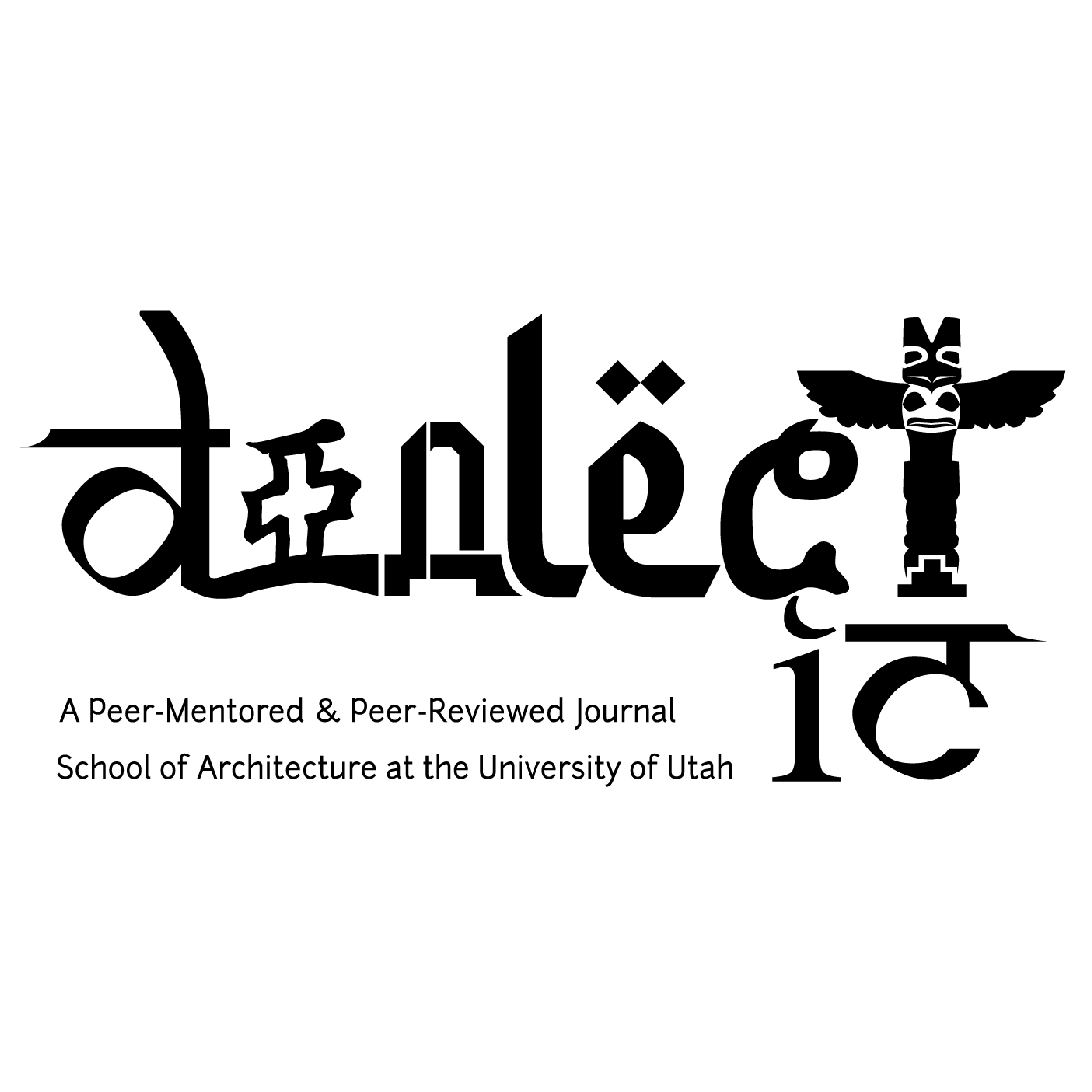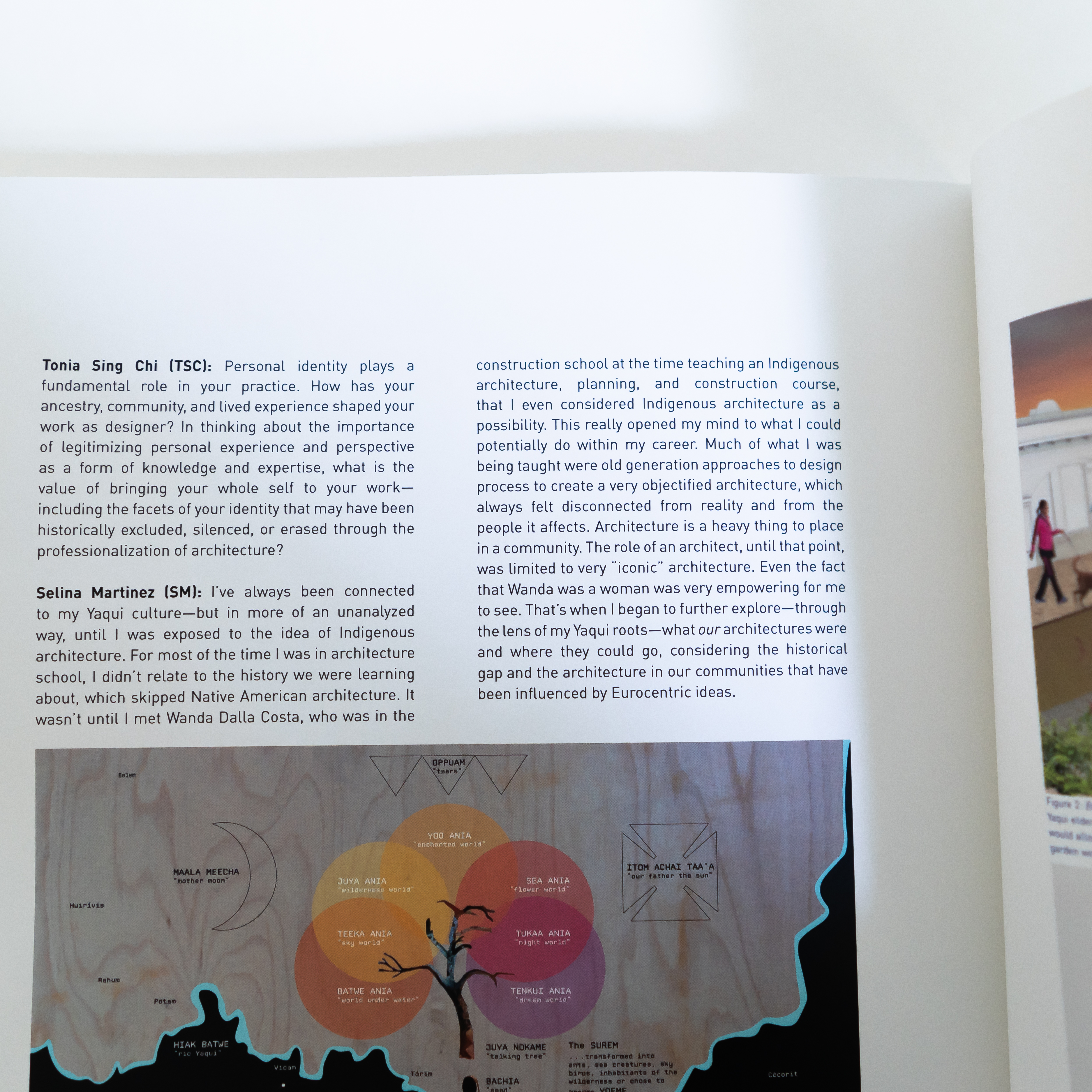Dialectic IX: Decolonizing Architectural Technologies
Publishing, Writing
2021
Call for Papers
Design and technology are inextricably connected, radically impacting the way we produce form and inhabit space. In the last several decades, technological shifts have pushed efficiency, performance, and data mediated approaches to spatial production under the guise of objectivity and universal applicability. But the distance of these physical and digital tools from the idiosyncrasies of the human hand and mind, does not make them neutral instruments. Their placement after decolonizing (a process of achieving self-realization of a previously dominated people) in the title of Dialectic IX is strategic. It strips away from “architectural technologies” all claims of universality, scientific neutrality, and knowledge progression, reframing both decolonization and technology as cultural practices. Furthermore, the focus on techniques in our thematic identifies the locus of resistance to spatial inequity and colonial erasure, not elsewhere but squarely in designers, preservationists, urbanists, cartographers, engineers, programmers, and most of all in educators.
Acknowledging technology’s role in perpetuating and amplifying spatial and social structures that discipline human behavior, choices, and imagination, how might it be used instead as a tool fordelivering cultural sovereignty? We have numerous examples of this. In recent years, preservationists, anthropologists, and archaeologists have adopted digital techniques such as 3D scanning, photogrammetry, and augmented reality to protect, interpret, and transmit not only
tangible or built heritage, but also intangible expressions of culture--performances, practices, oralities, and lived experiences. Indigenous artists and urbanists are employing digital media technologies such as virtual reality, mobile apps, and sound recording as new modes of storytelling that are immersive, relational, and non-linear. In architecture, interactive tools have fostered participatory and collective modes of working, expanding the agency of designers and community end users in creating more adaptive and inclusive environments. The building industry has transformed vernacular building materials such as earth and wood by connecting them to advancements in construction technology and contemporary concepts of ecological design and circular economies. Geographers, film makers and landscape architects have alsobrought the act of mapping into question. Learning the notation of landscapes with petroglyphs,
natural observatories, smoke signals, and dance has brought into sharp focus scientific mapping as an instrument of cultural domination. The emerging field of cultural mapping, in conjunction with geo-spatial information technologies, has been employed to protect tribal resources, expand the potential for engagement and empowerment for indigenous communities, and spatialize new ways of knowing the relationships between people and places.
The editors of Dialectic IX welcome submissions on the braiding of different cultural attitudes to building construction with industrialized modes of project delivery, recoveries of endangered ways of building, harvesting materials, and the application of technologies both material andimmaterial, animate and inanimate, in design thinking and practice. How are the lines of inquiry opened by immersive storytelling, cultural mapping, and the collection of indigenousepistemologies disrupting status quo practices of communication, analysis, and production employed in the design of cultural landscapes? Do we have good examples of new research methods in design that address the biases implicit in technology? Are there case studies that insist on human processes to offset technology’s tendency to favor merciless efficiency,optimization, and cost-effectiveness? How are colonized peoples re-appropriating the technologies that have excluded, erased, and othered them in the past?
“Decolonizing Architectural Technologies” not only responds to the social inequities perpetuated through notions of knowledge progression and human advancement, but it also makes space for new directions in design technologies, informed by diverse ways of knowing and creating. Dialectic IX invites articles, reports, documentation, interviews, and photo essays on best practices of decolonizing architectural technologies. Possible contributions may also include mapping of ongoing debates across the world, and reviews of books, journals, exhibitions and new media.
Download PDF of the Editorial
Role: Guest Editor
Editorial Team: Shundana Yusaf & Tonia Sing Chi





